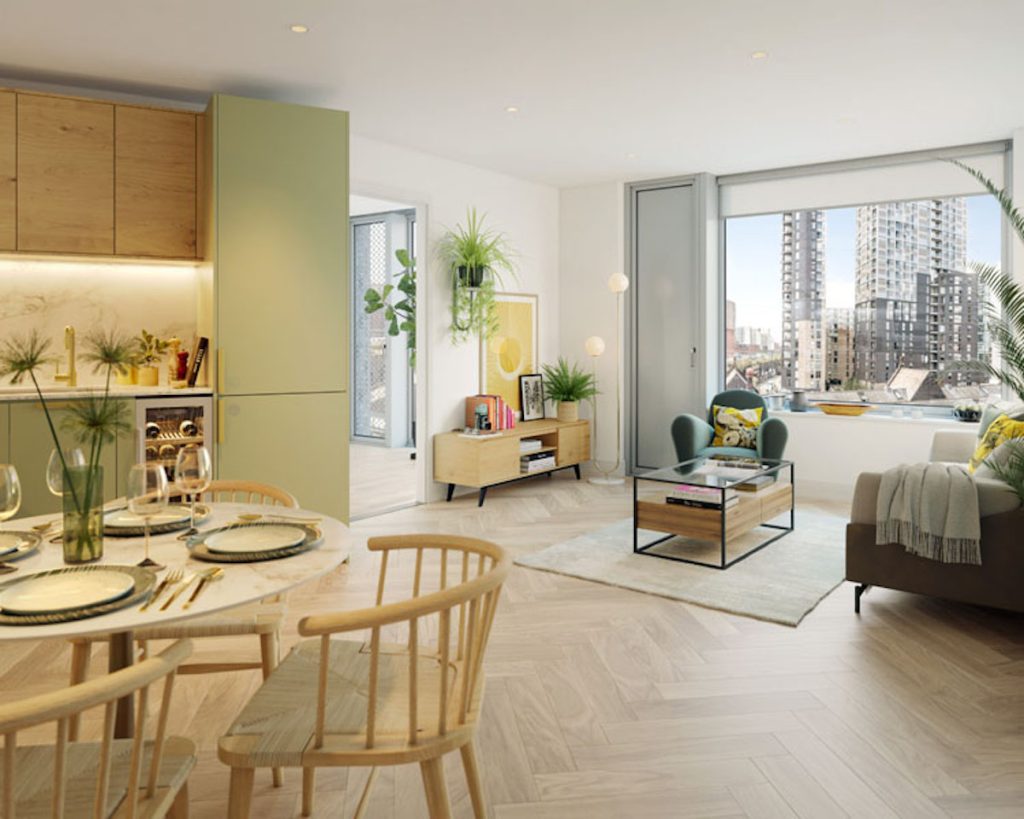Kimpton, a leading provider of mechanical and electrical services for Built-to-Rent (BTR) and Purpose Built Student Accommodation (PBSA) markets, has identified significant trends shaping the BTR landscape in the UK and globally.
1. Growing Demand for Rental Housing:
A noticeable shift towards renting rather than homeownership is evident, driven by factors such as higher interest rates and the desire for flexibility. Housing affordability, particularly in certain areas, is a significant challenge making rental housing an appealing and sometimes the only option.
2. Institutional Investment:
Institutional investors, including pension funds and real estate investment trusts (REITs), are increasingly showing interest in BTR projects. The sector’s potential for long-term, stable returns makes it an attractive option for building a balanced investment portfolio.
3. Focus on Amenities and Community Spaces:
BTR developments are prioritising high-quality amenities and communal spaces to attract tenants. Gyms, co-working spaces, communal lounges, and outdoor areas contribute to creating a desirable living environment, moving away from high-density accommodation blocks.
4. Technology Integration:
The integration of smart home features and efficient property management using technologies such as Internet of Things (IoT) devices and energy-efficient systems is becoming a standard in BTR developments. This aligns with the increasing prevalence of remote work, requiring adaptable designs for work-from-home spaces.
5. Sustainable and Green Practices:
BTR developers are incorporating sustainable and eco-friendly practices, including energy-efficient designs and green building materials. The demand for green technology among environmentally conscious Gen Z and Millennials is evident.
6. Location and Connectivity:
Proximity to transportation hubs, employment centres, and lifestyle amenities remains crucial in BTR development. Access to urban conveniences and connectivity, exemplified by Kimpton projects like the Conington Road BTR Scheme in Lewisham, enhances the appeal of such developments.
7. Sustainability and ESG Considerations:
A growing emphasis on environmental, social, and governance (ESG) factors is driving BTR developers to adopt more sustainable practices. Compliance with evolving regulations, especially in relation to EPC ratings, is a priority for new developments.
8. Diversification of BTR Offerings:
Developers are diversifying their BTR portfolios to include various unit types, catering to different demographics and lifestyle preferences. The inclusion of larger units accommodates families, reflecting shifts in household structures.
9. Demographic Changes:
Population growth, urbanisation trends, and changes in household structures influence the demand for rental housing. The aging population and the rise of single-person households in the UK are shaping the types of properties and amenities being created.
10. Brownfield Takeover:
The reshaping of city landscapes, including the conversion of empty retail units and downsized office spaces into BTR units, presents an opportunity for developers. Coordinated and sensitive planning is crucial for ensuring the future vibrancy of cities.
Matt Breakwell, Business Development Manager at Kimpton said:
“The BTR sector is experiencing substantial growth and will become an increasingly significant driver of the housing market. Kimpton recognise the opportunity for developers and investors to reshape cities, creating sustainable communities and create a genuine solution for individuals seeking long-term, flexible, high-quality living arrangements in a changing housing landscape. We are delighted to be continuing to play our part in the decarbonisation of the BTR sector.”

Building, Design & Construction Magazine | The Choice of Industry Professionals





